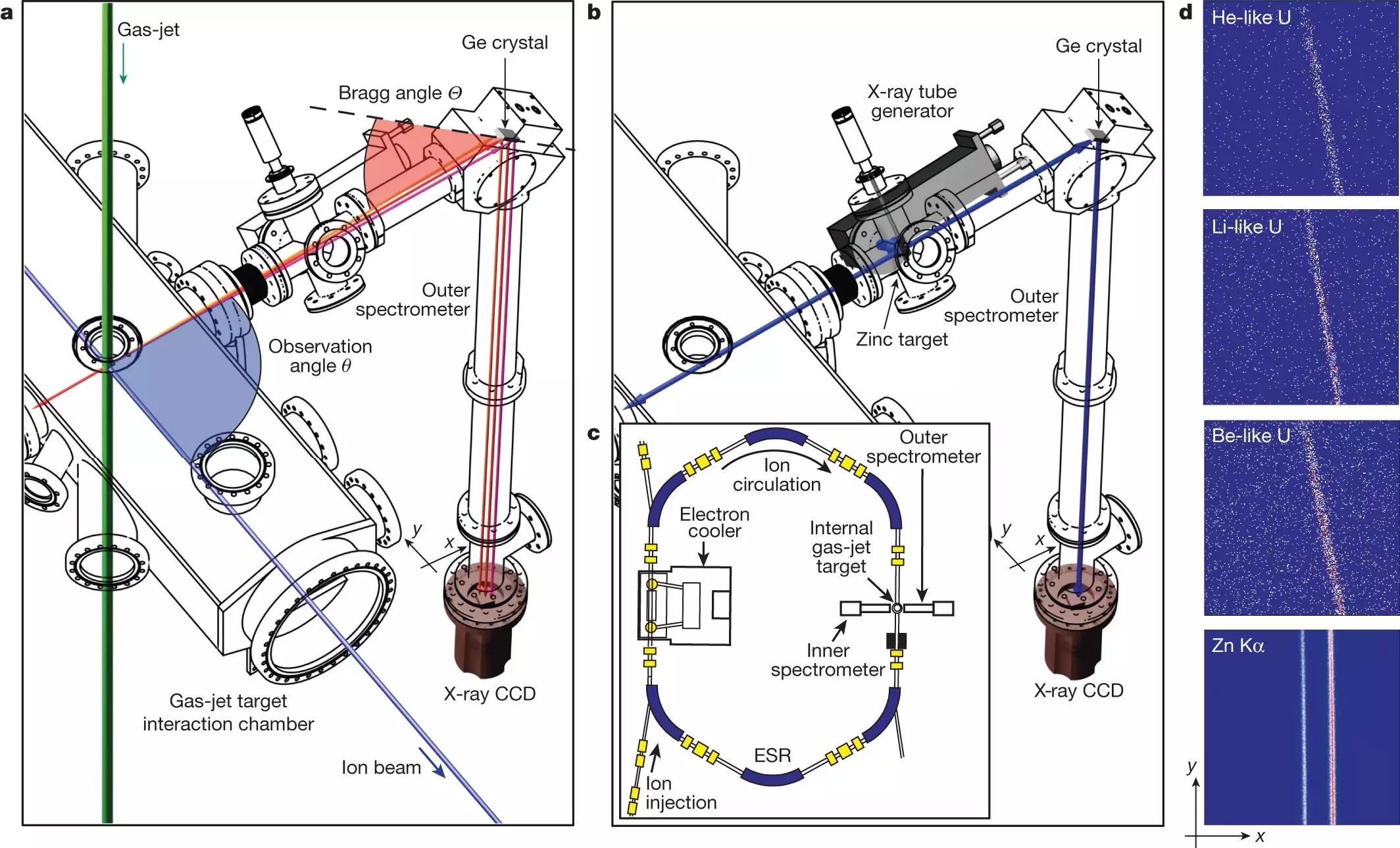An international research team comprising scientists from Friedrich Schiller University Jena and the Helmholtz Institute Jena in Germany has achieved a significant breakthrough in the field of X-ray spectroscopy. By conducting ultra-precise measurements on helium-like uranium, the team has successfully disentangled and separately tested quantum electrodynamic effects for extremely strong Coulomb fields of the heaviest nuclei. These groundbreaking results have been recently published in the prestigious journal Nature.
The focus of this research lies in unraveling the fundamental question of what holds our world together at its innermost level. Spearheaded by Dr. Robert Lötzsch, an experimental physicist at the Institute of Optics and Quantum Electronics at the University of Jena, the team aimed to shed light on the intricate nature of uranium, an element characterized by its atomic number 92. While precise measurements of electron transitions in hydrogen atoms can be made to an impressive 13 decimal places, the team managed to achieve measurements of uranium to an impressive five decimal places. The specific area of interest is the transition between different electron orbits.
The experiments took place at the GSI/FAIR experimental storage ring in Darmstadt, which serves as a particle accelerator complex utilized by multiple European countries. Collaborative study groups from Poland, France, Portugal, and Germany joined forces under the leadership of Martino Trassinelli and Dr. Robert Lötzsch to carry out these groundbreaking measurements.
The Darmstadt complex is equipped with an ion storage ring with a circumference exceeding 100 meters, complemented by an upstream accelerator extending over a kilometer. The researchers employed a multi-step process beginning with the vaporization of uranium, followed by its acceleration to nearly 40% of the speed of light. Subsequently, this accelerated material passed through a special film, causing the loss of electrons. These accelerated electrons were then directed into a storage ring, where they raced around a circular path at an astonishing frequency of up to 50 million times per second. By utilizing a specialized Bragg crystal spectrometer designed and manufactured in Jena, the team was able to detect and measure electron transitions during this high-speed process.
The linchpin of this precise measurement apparatus is a meticulously crafted germanium crystal. Bent to specific specifications, this crystal is as thin as a sheet of paper and carefully held in a specially designed glass mold. The complexity of this technique necessitates extensive expertise, which has been honed over three decades of research and development. The culmination of these efforts, the experimental results on helium-like uranium, emerged from a meticulously conducted experiment in 2021.
Achievements Amidst Challenges
Undertaken during the Easter period of 2021, the experiment encountered unprecedented challenges presented by the ongoing COVID-19 pandemic. Despite the obstacles and complication, Dr. Lötzsch remains resolute in his belief that the results obtained were well worth the remarkable effort invested by the entire research team.
This breakthrough in ultra-precise X-ray spectroscopy ushers in a new era of understanding the inner workings of heavy nuclei, especially those of uranium. By disentangling and testing one-electron two-loop and two-electron quantum electrodynamic effects, this research paves the way for further investigations into the mysteries of our world at the atomic level. The implications of this research extend beyond fundamental physics, as it has the potential to impact fields such as materials science, nuclear physics, and quantum information science.
Through the collective efforts of international researchers and the advancements made at the GSI/FAIR experimental storage ring in Darmstadt, humanity gets one step closer to comprehending the fundamental forces that shape our universe. The breakthrough achieved by the team at Friedrich Schiller University Jena and the Helmholtz Institute Jena will undoubtedly inspire further exploration and innovation in the captivating field of X-ray spectroscopy.


Leave a Reply